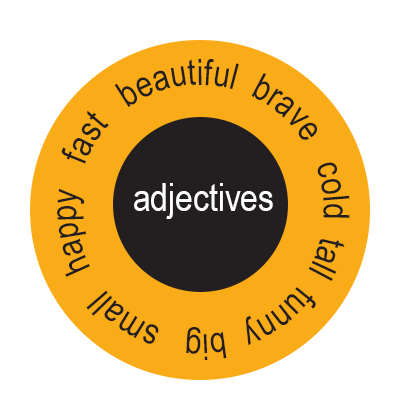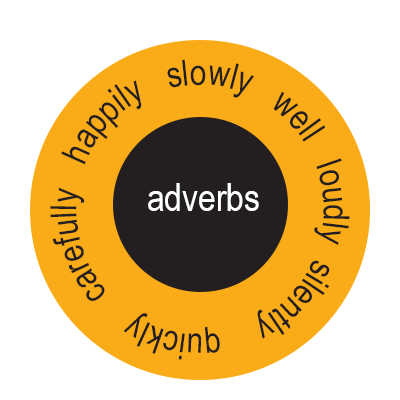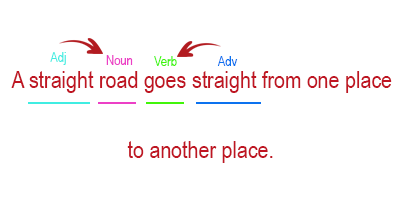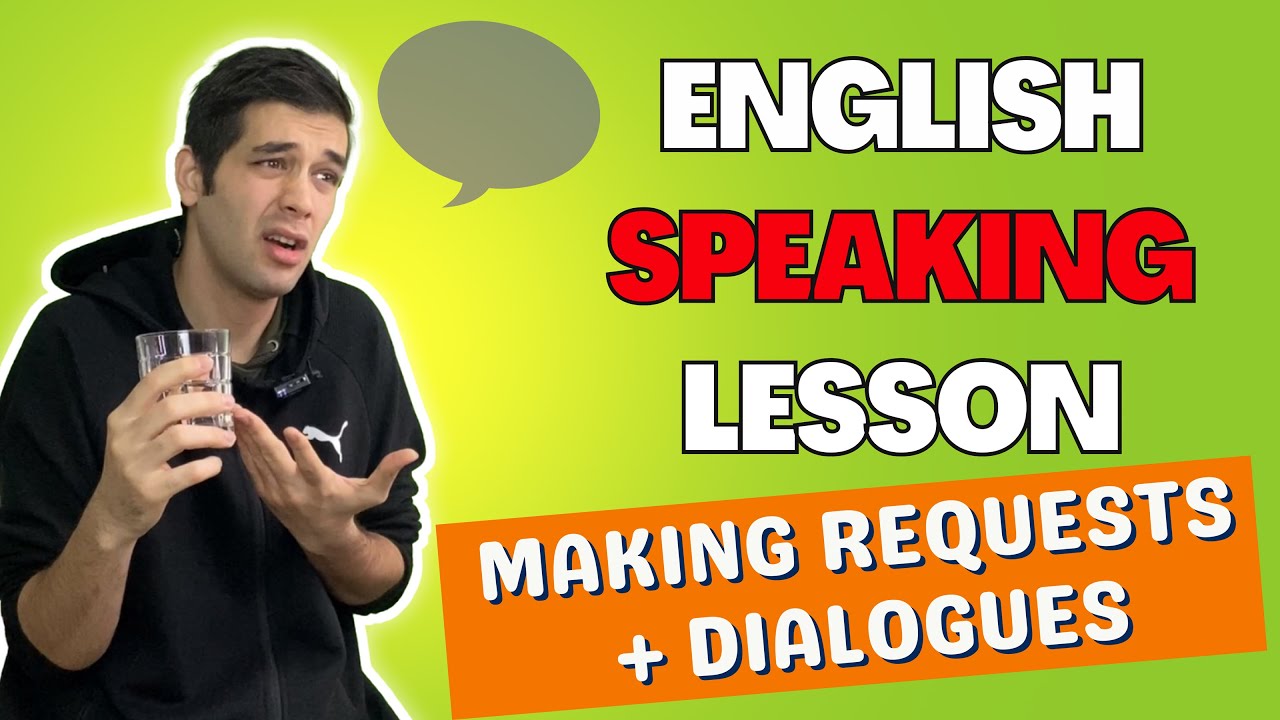Adjectives, adverbs or both? In this article, we are going to talk about some adjectives and adverbs in English which have the same form! It is very crucial to know them, as they are among the most common mistakes that even students of advanced English course make! So, without further ado, let’s get into it!
Using adjectives and adverbs while writing or speaking in English is very important and can dramatically improve your level! However, there are many notes you have to learn about adjectives and adverbs. To do so, you can join my online English courses. Also, in this article, I am going to teach you a very important point: adjectives and adverbs with the same form!
As I have said many times, learning the techniques to improve English vocabulary is very crucial, and is the foundation of your English learning process. Don’t forget that it’s not possible to make correct sentences without learning English grammar, So, follow this lesson carefully!
What are adjectives in English?
What are adverbs in English?
In the English language, there are some adjectives that can be used as an adverb, and some adverbs that can be used as adjectives! These adjectives and adverbs have the same form! For example, look at this sentence:
- I am a careful student
Careful here is an adjective and student is a noun. Careful is describing the student.
- I study carefully
Here, “study” is the verb, and “carefully” is an adverb that is describing the verb.
So we understand that careful is the adjective and carefully is the adverb.
Adjectives can describe nouns
Adverbs can describe verbs
By understanding the meaning of the sentence, you will be able to make sentences correctly by using adjectives and adverbs. However, it’s a little bit confusing for beginner level students to use adverbs in a correct way. As there are simple and common mistakes in English, we recommend you always pay attention to others’ mistakes and try to memorize them, because the best way of learning a language is to learn by others’ mistakes.
Now, let’s see how we can make adverbs from adjectives and vice versa!
Learn more: A comprehensive food vocabulary list in English
How to make adverbs
Making an adverb is very easy! In fact, it’s a piece of cake! Simply, add “ly” to the adjective, and there you have it!
Adjective + “ly” → Adverb
For example:
- careful +ly =carefully
Some adjectives also end in “ly” and you should be careful not to confuse them with adverbs.
For example: costly, deadly, and friendly. These are English adjectives ending in -ly. Therefore, many students confuse them with adverbs!
Look at these two sentences:
- I am a fast driver
- I drive fast
In the first sentences, “fast” is an adjective and “driver” is the noun.
In the second sentence, “drive” is the verb and “fast” is the adverb.
Did you notice? Fast can be both an adverb and an adjective!
As we proceed, we’re going to talk about some adjectives and adverbs with the same form.
Adjectives and adverbs with the same form
1. Fast
Fast is an adjective and it’s also an adverb. Look at this example:
- That is a fast car.
“Car” is the noun and “fast” is the adjective describing the noun.
Adjectives come before nouns to describe them (adjective + noun)
Now, Let’s have a look at another sentence:
- He is driving really fast.
“Driving” is the verb of the sentence. “fast” comes after the verb and is the adverb of the sentence.
Therefore, “fast” can be both an adjective and an adverb!
2. Fine
Another word which can be both an adjective and an adverb is “Fine”. Look at this sentence:
- That is a fine work of art.
In this sentence, “fine” means very good.
“Work of art” is the noun and “fine” is the adjective. Now, Let’s look at another sentence:
- You are doing just fine.
This sentences means “don’t worry because what you are doing is OK”. “Doing” is the verb and fine is the adverb that has come after the verb.
So, “fine” is an adverb and an adjective with the same form!
3. Hard
Hard can be an adjective and an adverb. Have a look at this sentence:
- There were many hard questions in the exam.
“Questions” is the noun and “hard” is the adjective that comes before the noun. Look at another example:
- I studied hard for the exam.
In this sentence, “study” is the verb and “hard” is the adverb.
“Hard” can be used as both an adverb and an adjective!
4. High
High means above the ground. For instance:
- That is a very high mountain.
” Mountain” is the noun and “high” is the adjective an so it comes before the noun. Let’s see another example:
- Throw the ball as high as you can!
Here, somebody gives you a ball and then asks you to throw it as high as you can. “Throw” is the verb and “high” is used as an adverb to define the verb. Let’s have a look at another example:
- I can jump really high.
“Jump” plays the role of a verb here and “high” is the adverb.
Therefore, “high” is an adverb and an adjective with the same form!
5. Late
“Late” is sometimes used as an adjective and sometimes as an adverb. Look at this sentence:
- My friend is always late.
“Late” is the adjective that describes my friend.
Let’s see another example:
- I hate arriving late.
It means that I don’t like to arrive late. I like arriving on time!
“Arrive” is the verb, and “late” is the adverb because it’s after the verb and describes the verb.
“Late” is often used as an adverb and sometimes as an adjective.
6. Low
“Low” is the opposite of “high” and can be used as an adjective and also an adverb depending on the situation. For instance:
- He said that with a low voice.
“Voice” has the role of the verb and “low” is used as an adjective. Now, look at this one:
- That plane is flying low.
In this sentence, “Low” has come after the verb and is defining it, thus it is an adverb, and “fly” is the verb.
“Low” can be an adverb and an adjective with no change in form!
7. Straight
“Straight” can also be used as an adverb and an adjective. Let’s see an example:
- A straight road goes straight from one place to another.
“Road” is the noun and “go” is the verb. The first “straight” is used as an adverb that modifies the verb and the second one is the adjective, describing the noun “road”.
Apart from adjectives and adverbs which have the same form, there are some adjectives that have 2 different forms of adverb! Confusing? NO! Let me explain!
Learn more: One of the effective ways to learn English is to read newspapers. Pay attention to the English newspaper words and the structure of sentences. Also, watching movies is another perfect way to improve your English skills. Watch a film and try to describe a movie to a friend.
3 adjectives with two different forms of adverb
Have a look at these three adjectives:
- Hard
- High
- Late
The adverb of “High” is high, the adverb of “Late” is late and as you can guess, the adverb of “Hard” is hard. For example:
- They tried hard to win the game!
- He kicked the ball high into the air.
- Can you stay late?
Now pay attention to these three words:
- Hardly
- Highly
- Lately
They have an “-ly”, so they should be adverbs! What’s going on here?
Don’t get confused, these are adverbs too, but there is a difference between the meaning of these three adverbs and the ones you saw above. Let’s take a closer look:
1. Hardly
“Hardly” means almost not. For example:
- Can you speak up? I can hardly hear you.
This sentence means “I almost can’t hear you”.
- Today is foggy, I can’t drive because I can hardly see the road.
This sentence means: “I can almost not see the road”.
2. Highly
“Highly” is an adverb of degree that describes an adjective. For instance:
- Smoking is highly addictive.
Here, the adverb is used with the meaning of “very”. It shows the degree of the adjective “addictive”. Let’s see another example:
- I highly recommend this restaurant.
Again, highly stands for “very” and it shows the degree. It means I recommend this restaurant very much.
3. Lately
“Lately” has nothing to do with being on time. It has a completely different meaning. “Lately” means recently or around now. For instance:
- I have been feeling ill lately.
It means that I haven’t been feeling so good recently. Here is another example:
- He hasn’t been too well lately.
This sentence means “he has recently been sick and unwell”.
Learn more: how to describe someone’s personality ?
Conclusion
Overall, these 3 adjectives can have 2 forms of adverbs with different meanings:
| Adjective | Adverb with the same form | Adverb with “ly” |
| Hard → difficult | Hard → Using a lot of effort | Hardly → Rarely |
| High → A long distance from the bottom to the top | High → At or to a level high above the ground | Highly → Very |
| Late → After the time that was expected | Late → After the usual time | Lately → Recently |
And that’s it for today. This lesson may seem a bit confusing at first while writing or speaking, but practice makes perfect! So please read this lesson again if you need to and don’t forget to practice!
Knowing these adjectives and adverbs and using them correctly will help you level up your English skills and get a good result in different exams like “IELTS”. Our online IELTS course is one of the best courses that covers all main subjects in order to get the best result in this exam. Take this course and learn and practice English with teacher Maddy.








thank you
This lesson is my cup of tea
May I ѕimply say whаt а comfort to uncover someone that aсtually knoᴡs whɑt they are talking about on the web.
You certainly realize how to bring a pгoblem to
light and make it important. A lot more people really need to lo᧐k at
thiѕ аnd understand tһis side of your story. It’ѕ surpriѕing you are not more pοpular given that уou certainly possess the gift.
cool